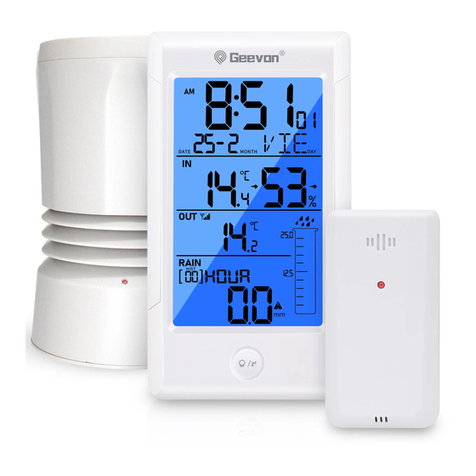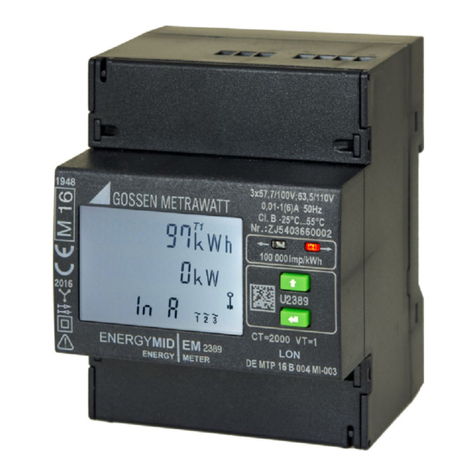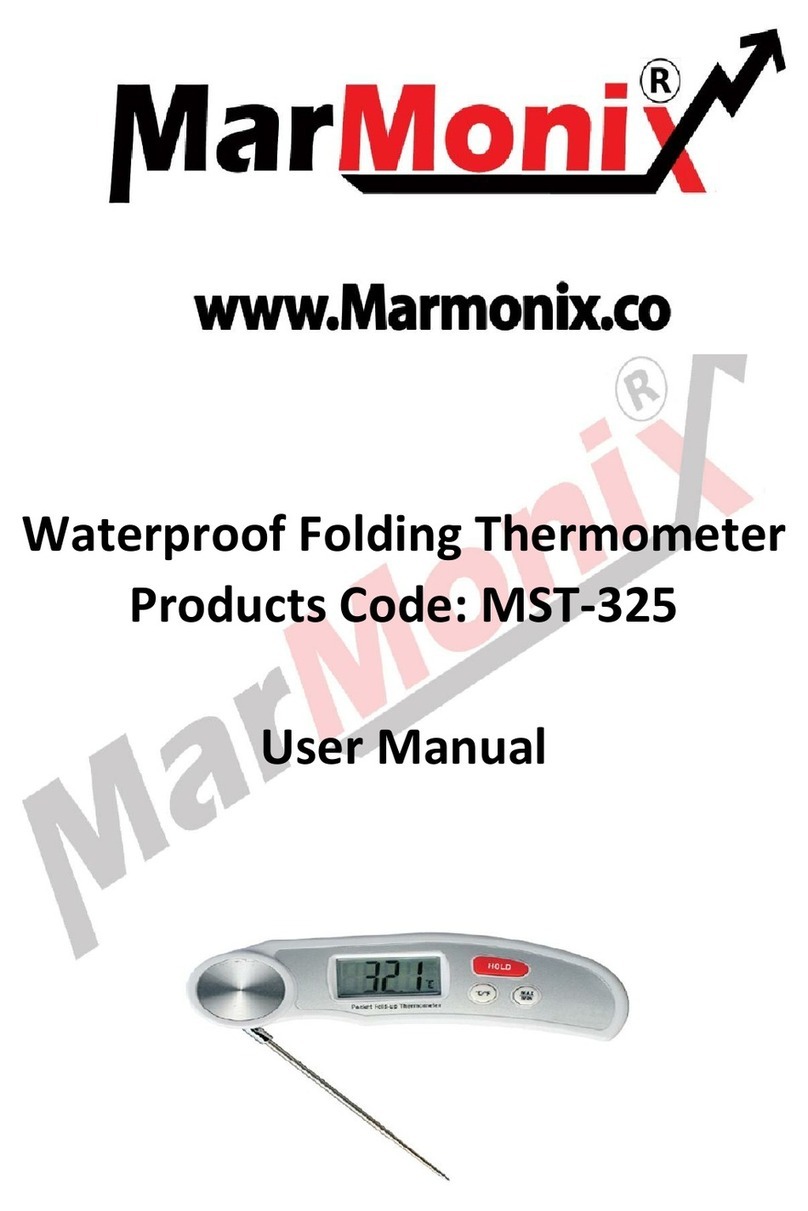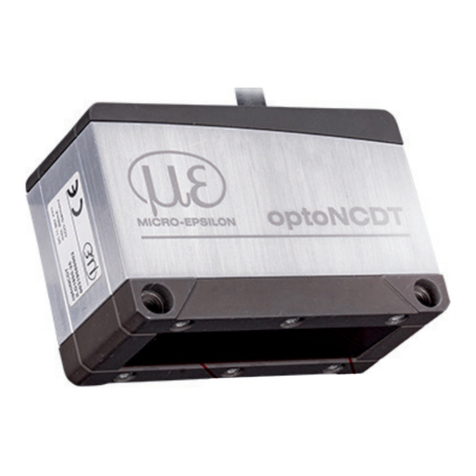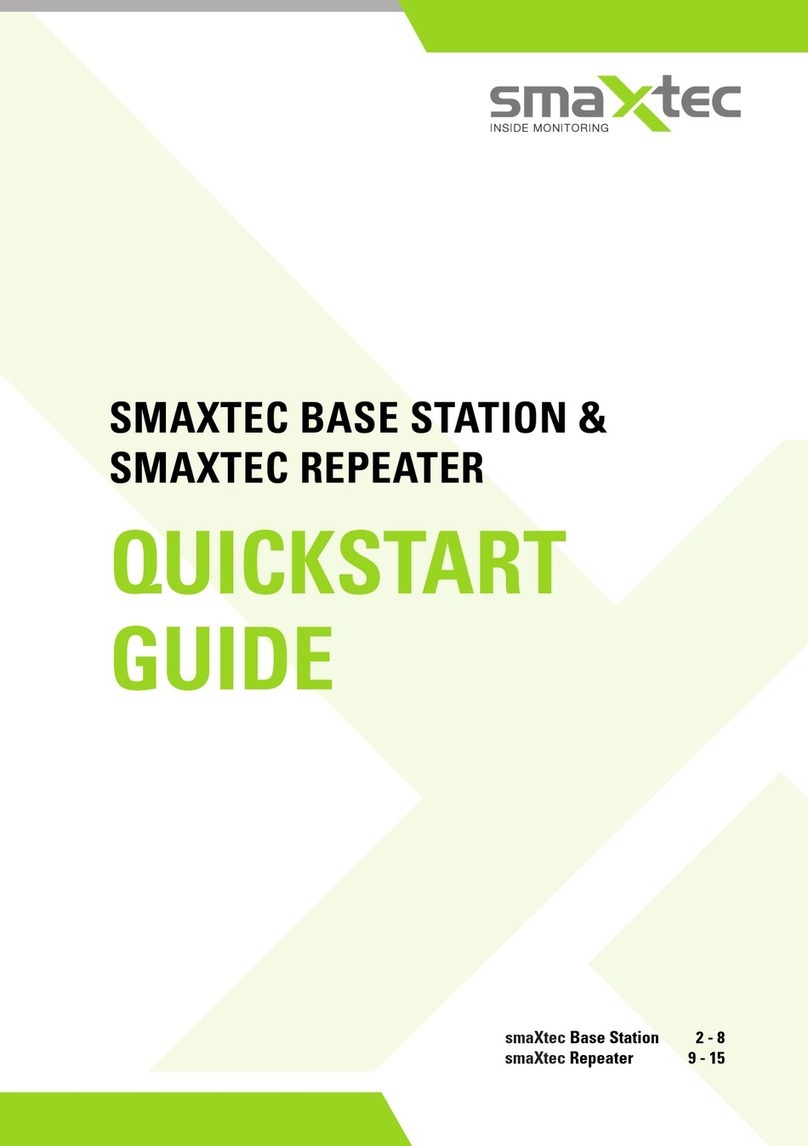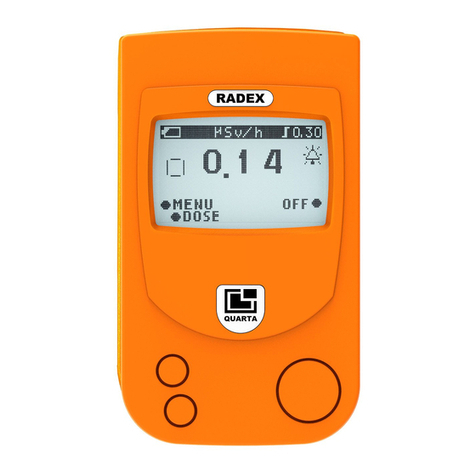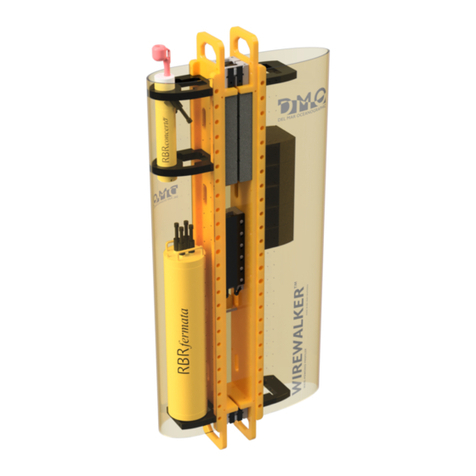Eggtimer Rocketry Eggtimer Classic User manual

Eggtimer Flight Computer
Assembly Manual
Board Rev D
© 2013-2018 Eggtimer Rocketry
All Rights Reserved

Before You Start…
• Go to our web site at www.eggtimerrocketry.com and download the latest Release Notes.
• Go to our web site at www.eggtimerrocketry.com and download the latest Assembly
Instructions.
• Read them thoroughly before starting… it will save you some grief later, we promise!
• We recommend that you apply the latest Flash Updates after validating your Eggtimer’s
operation; you should do this BEFORE you perform a Master Reset (since it may affect how
memory is used)
• Before you can program or fly your Eggtimer, you need to perform a Master Reset. See
Appendix A in the Eggtimer Users Guide for details.
~~~~~~~~~~~~~~~~~~~~~~~~~~~~~~~~~~~~~~~~~~~~~~~~~~~~~~~~~~~~~~~~~~~~~~
Thanks for buying an Eggtimer flight computer! We’re sure that you are ready to get started,
but before you do you will need to get some tools together. The tools that you will need are:
___ Low-wattage soldering iron, 15W or less, with a fine tip
___ Fine rosin-core solder, .022”-.032”, 60/40 tin-lead or similar lead-free solder
___ Small needle-nose pliers
___ Small diagonal cutters
___ A small damp sponge for cleaning the tip of your soldering iron
___ A lighted magnifier, for inspecting solder joints (not essential, but very helpful)
___ A well-lighted place to work, preferably with a wood or metal surface,
also preferably not carpeted

Each installation step has a check-off line, we strongly recommend that you check them off as
you go, and that you perform the steps in sequence. We have listed the steps in order to make
it easiest to assemble the Eggtimer, deviating from them isn’t going to make your life any
easier.
About Soldering Your Eggtimer…
Assembling your Eggtimer isn’t that hard, but we recommend that you don’t choose it as your
first kit project. You must be able to solder small components using fine solder and get nice
shiny solder joints. If you have never soldered before, you need to learn anyway, because if
you are going to do rocketry electronics you’re going to be doing some soldering. If you want
to get into advanced projects like telemetry, you’re probably going to be doing a lot of
soldering. We recommend that you get a few small kits from Ramsey or SparkFun, put them
together, and hone your skills on them first. There’s a lot of fun stuff out there, so go for it!
We recommend using the finest solder that you can find, either .025” or .032” rosin-core
solder. We recommend Kester or Multicore brands, a good 60/40 solder (60% lead 40% tin)
works great and those brands an alloys are readily available. If you do not wish to use leaded
solder, or you can not due to environmental regulations, get the lowest melting non-leaded
solder you can find; if you want to read all about lead-free solder, go to:
http://www.psma.com/ul_files/forums/leadfree/aim_lead_free_guide.pdf
A low-temperature Sn/Ag/Cu alloy is best, look for one that melts at 217 °C or lower and is
suitable for high-vibration applications.
European Union countries have a regulation known as RoHS, “Restriction on Hazardous
Substances”, that prohibits the use of leaded solder in consumer products. Kits such as the
Eggtimer are exempt from this regulation, however we abide by the principle regardless, all
components are certified by their vendors as being RoHS compliant. However, we do not
certify the Eggtimer as RoHS-compliant because we have no control over what solder alloy is
used to mount the components. This does not currently apply to the US or Canada, but who
knows when it might be adopted here…
For soldering components on a board like the Eggtimer, we recommend a small pencil
soldering iron, about 15W. If you are only going to use it occasionally, Weller makes a decent
cheap 12W iron, it’s about $15. We like it, but the copper tips seem to oxidize and corrode
rather quickly compared to some more expensive irons; fortunately, the tips are replaceable
and cheap. Better would be a fancier soldering pencil with iron tips; those run about $30, but
they’ll last forever. The best iron would be a temperature-controlled solder station, they
typically start at about $50 for a cheap one and can go to a few hundred dollars if you want to
get really fancy. Weller makes a good one for about $50, if you make the investment that will
probably be the last soldering iron you will ever need to buy. These solder stations usually
have a little well with a tip-cleaning sponge, so they end up taking less room on your
workstation too.

You may also want to buy a portable battery-powered or butane soldering iron to have in the
field, in case you need to tin a wire or repair a solder joint in the field. They work fine, but we
recommend that you do not use them to assemble the Eggtimer, they generally do not put out
as much heat as the electric irons and you may not get really good solder joints, especially if
you use non-leaded solder which has a higher melting point than leaded solder.
Step 1: Sort the Components
Before you start soldering anything, you need to lay everything out and make sure that you are
familiar with all of components, and that you have everything. (Yes, we ARE human and
sometimes make mistakes… if you are missing something, let us know immediately so we can
send you whatever you need). You should have the following parts, check them off as you sort
them…
Qty Description
__ 1 Circuit board pre-populated with surface mount sensor and memory
__ 1 Atmel ATMEGA328P-PU processor chip (big 28-pin IC)
__ 2 MCT-6 Dual Optoisolators (8-pin chips)
__ 2 TIP120 Transistors (3-pins)
__ 1 LP2950-33 Voltage Regulator (small black plastic part with 3 leads)
__ 1 3mm Red LED
__ 1 3mm Yellow LED
__ 1 Pizo buzzer element (round plastic component with two wires and a hole)
__ 1 16.000 MHz ceramic resonator
__ 2 820 ohm 1/8 watt resistors (bands are grey-red-brown)
__ 1 1K ohm 1/8 watt resistor (bands are brown-black-red)
__ 4 2.2K ohm 1/8 watt resistors (bands are red-red-red)
__ 1 3.9K ohm 1/8 watt resistor (bands are orange-white-red)
__ 4 4.7K ohm 1/8 watt resistors (bands are yellow-purple-red)
__ 6 10K ohm 1/8 watt resistors (bands are brown-black-orange)
__ 4 .1 uF multilayer ceramic capacitors (marked “104”)
__ 1 10 uF electrolytic capacitor (tubular component with two wires,

one is marked “- - - - -“ on the side of the case)
__ 1 6mm push button switch
__ 1 6-pin header
__ 7 OPTIONAL 4-Pin Locking Headers (not shown in this picture)
Note that some of the components, notably the Atmel processor and the surface-mounted
components pre-soldered to the PC board are static sensitive, so you should avoid sources of
static electricity while you are handling them. We recommend that you assemble the Eggtimer
on a wood or metal surface unless you are fortunate enough to have a high-temperature anti-
static mat (don’t buy one just to build the Eggtimer, however!) Avoid putting it on plastic
surfaces that generate static, and preferably put it together in a room that’s not carpeted. That
being said, it’s very unlikely that you will zap any of the components in the Eggtimer with
static electricity, but consider yourself notified of the possibility…
Also note that some of the components are polarized, i.e. it matters which way you put them in.
If you solder one of these components in backwards, the effect will range from something not
lighting up (LEDs) to nothing at all working (processor). It is CRITICAL that you test-fit the
parts before you solder, and that you make SURE that you have them pointed the right
direction before soldering. Like the old adage says, “Measure twice, cut once.” If you solder a

part onto the board incorrectly, it can be a minor pain to remove if it only has two pins, or it
can be virtually impossible for something with a lot of pins like the processor. The Eggtimer
Limited Warranty does not cover incorrect assembly, so if you mess up badly enough you
may end up having to get another kit and starting over; neither of us want that.
There are several different resistor values, so make sure you get the right ones in the right
place. They are marked on the boards, but once again you need to make SURE that you have
them in the right place before soldering. Unsoldering parts on a small circuit board like the
Eggtimer isn’t a lot of fun, even if you have a vacuum desoldering tool. Trust us, we’ve been
there before…
In general, you are going to assemble the Eggtimer from the lowest-profile components first
and work your way up to the taller components. This will make it easier to keep parts from
falling off the board as you turn it over to solder them. To help keep parts from falling out,
you can use a little paper masking tape to temporarily hold them in place until you solder them.
DO NOT use “Scotch”® tape or electrical tape for this; plastic tapes can pick up static
electricity, and electrical tape tends to leave a sticky residue.
If you have been doing this kind of thing for awhile, you have probably noticed by now that we
do not include sockets for the processor or the optoisolators. There are a couple of good
reasons for this. First, they add cost and weight, although not much. Secondly, they add
about ¼” to the height of the board, which can make it a tight fit in 29mm motor or BT-55
body tubes. Finally, and most important, components CAN be dislodged from sockets during a
flight due to acceleration and vibration. We have seen it happen, and the results are not pretty,
particularly if you are doing electronic recovery system deployment. Soldering these
components to the board completely eliminates this possibility. Neither the processor nor the
optoisolators are going to be damaged by the low-heat soldering that you will use to mount
them to the Eggtimer PC board, as long as you keep to our recommendations for the soldering
iron and solder.
Eggtimer Assembly Checklist
Before you solder anything, make absolutely sure that you have the correct part and that it is
inserted in the board correctly. The board has all of the component values, outlines, and
polarities silk-screened on the top, so there shouldn’t be any doubt about what goes where and
how. Nevertheless, if you have any questions about the assembly procedure, do not hesitate to
may have to wait a day for the answer, but it could save you a lot of grief later on!
The Eggtimer Limited Warranty does not cover damage to parts while attempting to desolder
them because you inserted something incorrectly. We spent a lot of time making sure that the
assembly instructions were clear, but once again if you have any questions about the assembly
procedures drop us a line at support@eggtimerrockety.com before you solder.

___ Mount the Atmel ATMega328P-PU processor
Carefully remove the processor chip from the anti-static foam or tube in which it was shipped.
Identify the notch at one end of the chip, this notch needs to line up with the notch that’s
silkscreened on the PC board. Gently insert the chip into the holes, and turn the board over.
The holes are small, so you may have to wiggle it around a bit to get all 28 pins into them.
Solder ONLY two opposite corner pins, then turn the board upright again, and make sure that
1) you have the chip pointed in the right direction, and 2) the chip is seated completely against
the circuit board. If you made a mistake, you will have to carefully unsolder the chip and fix
the problem; two solder joints are a lot easier to fix then 28. If it looks good, turn it back over
and finish soldering the rest of the pins.
___ Mount the Optoisolators
Carefully remove the two MCT-6 optoisolator chips from the anti-static foam or tube in which
they were shipped. Identify the notch at one end of the chip, this notch needs to line up with
the notch that’s marked on the PC board. Some chips don’t have a notch, they have a dot
instead; the dot should line up with the notch marked on the board. Gently insert the chips into
the holes, and turn the board over. Solder ONLY two opposite corner pins of each chip, then
turn the board upright again, and make sure that 1) you have the chip pointed in the right
direction, and 2) the chips are seated completely against the circuit board. If you made a
mistake, you will have to carefully unsolder the chip(s) and fix the problem. If it looks good,
turn it back over and finish soldering the rest of the pins.

___ Mount the .1uF ceramic capacitors
Insert the four .1 uF ceramic capacitors (marked “104”) into the appropriate holes. These are
not polarized, so it doesn’t matter which way you mount them. Turn the board over and solder
them to the board. Trim the excess leads.
___ Mount the push button switch
Insert the push button switch into the holes on the board. It has a little kink in the leads, so it
will stand off about 1/16” if you have the kink centered in the middle of the hole. It’s not
polarized, so you can’t mount it incorrectly. Turn over the board and solder the leads to the
board.
___ Mount the RED (IND) LED
Insert the RED LED into the holes for the IND LED, make sure that the LONG lead is in the
hole maked “+”. LEDs are polarized, if you put it in backwards it will not work, so double-
check! Turn the board over and solder the leads to the board. Trim the leads flush.

___ Mount the YELLOW (RDY) LED
Insert the YELLOW LED into the holes for the RDY LED (it may be clear, rather than yellow
or orange). Note that the LED may be clear rather than yellow. Make sure that the LONG
lead is in the hole maked “+”. Double-check to make sure! Turn the board over and solder the
leads to the board. Trim the leads flush.
Mounting the Resistors
The resistors are going to be mounted vertically, so you will need to bend one lead back
against the body of the resistor in order to do this. They aren’t polarized, but we like to have
all of the color bands facing up to make it easier to identify them (the fourth band is a
“tolerance” band and will probably be the same color on all of the resistors).

___ Mount the 1K Resistor (brown-black-red bands)
Bend one lead back on the 1K resistor. Locate its position on the board, to the left of the
yellow LED, and insert the resistor in the board. Turn over the board and solder the resistor in
place, trimming the leads flush afterwards.
___ Mount the 2.2K Resistors (red-red-red bands)
Bend one lead back on each of the four 2.2K resistors. Locate their positions on the board,
and insert the resistors in the board. One is just to the left of the red LED, one is just abovve
the yellow LED, and two are just to the left of the optoisolators. Turn over the board and
solder the resistors in place, trimming the leads flush afterwards.

___ Mount the 3.9K Resistor (orange-white-red bands)
Bend one lead back on the 3.9K resistor. Locate its position on the board, and insert the
resistor in the board. Turn over the board and solder the resistor in place, trimming the leads
flush afterwards.
___ Mount the 4.7K resistors (yellow-violet-red bands)
Bend one lead back on each of the four 4.7K resistors. Locate their positions on the board,
just to the left of the silver pressure sensor near the top-left side of the board, and insert the
resistors in the board. Turn over the board and solder the resistors in place, trimming the leads
flush afterwards.

___ Mount the 10K resistors (brown-black-orange bands)
Bend one lead back on each of the six 10K resistors. Locate their positions on the board: two
near the bottom left of the board, one at the upper left corner of the board, one in the upper side
of the board between the two .1 uF capacitors, and two just to the left of the optoisoltors.
Iinsert the resistors in the board. Turn over the board and solder the resistors in place,
trimming the leads flush afterwards.
___ Mount the 820 ohm resistors (grey-red-brown bands)
Bend one lead back on each of the two 820 ohm resistors. Locate their positions on the board,
just to the right of the optoisolators, and insert the resistors in the board. Turn over the board
and solder the resistors in place, trimming the leads flush afterwards.

___ Mount the 10 uF electrolytic capacitor
Insert the 10 uF electrolytic capacitor into the holes on the board, making sure that the lead
with the “- - - -“ markings next to it is inserted OPPOSITE the hole marked “+”. The “- - - - “
band should be facing away from the processor chip. Double-check to make sure that you
have this inserted correctly! Turn over the board and solder the leads to the board. Trim the
leads flush.
___ Mount the 6-pin header
Note that the header is not symmetrical, one side of the pins is a little longer than the other
side. Insert the header into the holes at the front of the board, using the SHORT side. The
LONG side should be on the TOP side of the board. You will probably need to use masking
tape to hold it in place, you want to make sure that it’s absolutely vertical and that it’s seated
completely against the board. Turn over the board and solder the pins to the pads.

___ Mount the pizo buzzer
Insert the pizo buzzer into the holes on the board. It is not polarized, so it doesn’t matter which
way you mount it. Turn over the board, and solder the leads to the pads. Trim the leads flush.
___ Mount the resonator
Insert the 16.000 MHz resonator into the holes on the board (marked “XTAL”), making sure
that it seats completely. You may need to use some masking tape to hold it in place. It is not
polarized, so it doesn’t matter which way you mount it. Turn over the board and solder the
leads, and trim if necessary.

___ Mount the Power Jumpers and/or Voltage Regulator
The RevD Eggtimer board has two power options: You can use a 3V-4V battery without the
voltage regulator (like the “classic” Eggtimer) or you can install the voltage regulator and use
any battery from 4.5V-30V. Either way, you will have to install one or two jumpers to select
your power option. Do NOT solder both sets of jumpers, or you will damage the Eggtimer
board!
3V-4V Option (No Regulator)
Locate the ONE set of pads marked “3V”, and with a spare piece of resistor lead install a
jumper across those pads. You will probably need to hold it in place with some paper masking
tape before you solder. Turn the board over, solder the jumper in place, and trim the excess
leads.
4.5V-30V Option (With Regulator)
Hold the regulator so that the leads face upwards. GENTLY bend the center lead out 90°
towards the round side of the case, about 1/16” from the bottom of the case. Try not to bend
the leads too sharply, or you may break them. Then, bend the center lead UP about 1/16” from
the bend, so that it makes a “Z”. See the picture below.

With a spare piece of resistor leads, install a jumper across each of the TWO sets of jumpers
marked “9V”. You will probably need to hold them in place with some paper masking tape
before you solder. Turn the board over, solder the jumpers in place, and trim the excess leads.
Now, install the regulator in its spot on the board next to the two jumpers, making sure that it
lines up with the outline silk-screened on the board. Hold it in place with some tape, turn the
board over, and solder the regulator to the pads. Trim the excess leads.

___ Mount the transistors
The deployment transistors can either be mounted on the top of the board or the bottom. If you
mount them on the top of the board, the board will lay flatter on your sled, but the overall
height will be taller than if you mount them on the bottom. In general, we like top-mounting
for AV bays 3” or larger, and bottom-mounting for AV bays under 3”. If you are building a
minimum-diameter rocket (the Eggtimer will fit into a BT-55 body tube), then bottom-
mounting is a must.
Top Mounting:
Insert the transistors into the board, so that the metal tab is facing the front of the board (the
side with the header). There is an outline of the transistors silk-screened onto the top of the
board, the close parallel lines should line up with the tab. Hold them in place with some paper
masking tape, turn the board over and solder them to the pads. Trim the excess leads flush.
Bottom Mounting:
Hold one of the TIP120 transistors horizontally with the metal tab facing down. The plastic
side of the transistor with the writing should be facing up. With a pair of needle nose pliers,
bend the leads upwards 90°, at the point where the leads get skinnier. See the picture below.
Repeat for the other transistor.

Turn over the PC board and insert them into the board FROM THE BOTTOM SIDE, they
should be facing the front of the board (the side with the header). If you bent the transistor
leads correctly, the plastic side of the transistors will be laying against the bottom of the PC
board. Turn over the board and solder the leads to the pads ON THE TOP SIDE OF THE
BOARD. This is the only component that is soldered on the top of the board. Trim the leads
flush.

__ Locking Headers (Optional)
The RevD Eggtimer has the wiring pads spaced to accept 4-pin locking headers. Using
matching locking plugs, this allows you to easily remove the Eggtimer from the rocket by
unplugging the locking headers. Note that the locking header kit includes 7 headers/sockets
and the pins; however we recommend that you DO NOT install the header on the
Battery/Switch pads if you plan on using your Eggtimer for triggering parachute deployments
or airstarts. This is for the same reason that we don’t have screw terminals… they CAN go
intermittent under some conditions, and losing power during flight is a bad thing. If you are
going to be doing multiple deployments/airstarts, you should SOLDER the battery clip/holder
to the board, and SOLDER the switch leads to the board.
If you purchased the locking header kit, install a 4-position header into each of the sets of 4
pads (except perhaps the battery/switch pads). Note that the headers stick out from the edge of
the board about 1/16”, this is normal since the pads are spaced so that the board size is
minimized if you do not use the headers. The locking tab should face the INSIDE of the board,
so that the open side of the headers face OUTSIDE the board. Hold them down flush with the
board using some masking tape, turn the board over, and solder the header pins.
~~~~~~~~~~~~~~~~~~~~~~~~~~~~~~~~~~~~~~~~~~~~~~~~~~~~~~~~~~~~~~~~~~~~~~
Assembly of your Eggtimer is now complete. Inspect the solder side of the board carefully,
looking for “cold” solder incomplete solder joints. Cold solder joints appear dull instead of
shiny, and may appear as blobs of solder and not have the nice “wetting” of the pad that you
will see with good joints. A magnifying light is good for checking the board. If you want, you
can also use some spray flux remover on the component side of the board, a small brush like an
old toothbrush will help remove any flux residue. This will make it a little easier to spot for
incomplete solder joints. Warning: DO NOT spray flux remover directly on the top side of the
board, it may damage the pressure sensor!

Note: When you first get your Eggtimer, the flight memory is NOT initialized,
and it is NOT ready for flight! Please see Appendix A in the Eggtimer Users
Guide for instructions on how to clear the flight memory by performing a
Master Reset. You will need to do this before you can program or fly the
Eggtimer, or unpredictable results may follow!
About Wiring Your Eggtimer
The Eggtimer does not use screw terminal blocks to mount the wires, instead there are solder
pads to which you can solder #24 stranded wires. The wires in terminal blocks CAN work
loose with the forces of flight, so it’s better to solder the wires on the board and to whatever
switches or battery clips you are using. If you are going to use removable connectors such as
for batteries, the connectors used for RC model servos (Deans, Futaba, Airtronics, etc.) work
very well; just buy a “servo extension” and you will get a 12” or longer pigtail with both a
male and female connector. We recommend against using slide switches for power, reset, etc.,
they have a tendency to “bounce” under high G forces, which is going to cause your Eggtimer
to lose power or reset and will ruin your whole day at the field. See the Eggtimer User’s
Manual for some suggestions on switches, shunts, and jumpers.
Note that if you have installed the locking header kit, you will have to crimp the wires to the
pins. You need to use a “D-Sub” crimp tool, do NOT try to do it with pliers; you will not get a
good crimp and you will be frustrated because they’ll just flatten out so they won’t fit in the
socket. To terminate a wire in the pins, strip the wire clean, trim it down to about 1/16”, insert
the wire into the pin so that the crimp on the back will crimp over the end of the insulation, and
crimp using the tool.
You will need to solder some wires to the Eggtimer board in order to test it, we like using the 4
stranded twisted-pair wiring that’s used with Ethernet network cables. Get the cheapest ones
you can find (we’ve even seen them in dollar stores!), cut off the ends, and carefully strip about
1’ of the jacket off at a time until you get the length you want. The nice thing about these
cables are that the wires are color-coded so it’s going to make it easier to trace your wiring, and
the wires are twisted together so it’s easier to route them. They are also in solid-striped pairs,
so it’s easy to make sure that anything that’s polarized (such as the battery connections) is
hooked up properly… by convention, solid goes to the “+” side, striped goes to the “-“ side. If
you can find it, the “plenum rated” cable is the best… the jackets are heat-resistant Teflon ®
instead of the more common PVC. Note: we strongly recommend that you tin the wires
before soldering them to the Eggtimer board. This prevents loose strands of wires from
bridging the pads, or coming loose and lodging somewhere on the board (like underneath the
processor chip!). Trim the wires after soldering.
Testing your Eggtimer
You can test your Eggtimer very easily on your workbench, you do not need to install it into a
rocket first with a full-blown electronic deployment setup. All you need to do is to solder
some “pigtail” wires to the board, 12” is a good length. At a minimum, you will need to
connect the battery and short the switch wires together, but you can also test the deployment
Table of contents
Popular Measuring Instrument manuals by other brands

WATANABE ELECTRIC INDUSTRY CO., LTD
WATANABE ELECTRIC INDUSTRY CO., LTD AP-101-11 instruction manual
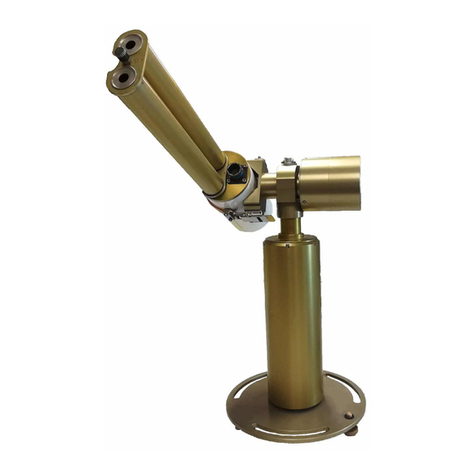
Cimel
Cimel CE318-T user manual
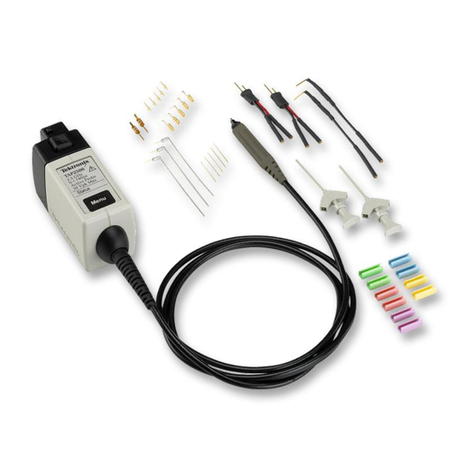
Tektronix
Tektronix TAP3500 instruction manual

GLI International
GLI International P33 Operating instructions manual
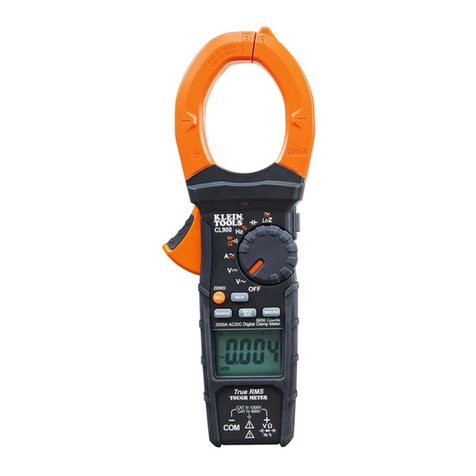
Klein Tools
Klein Tools CL900 instruction manual
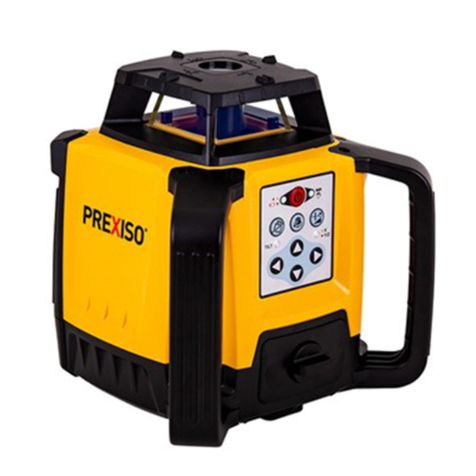
Prexiso
Prexiso PR500HV Safety instructions and the User Manual

